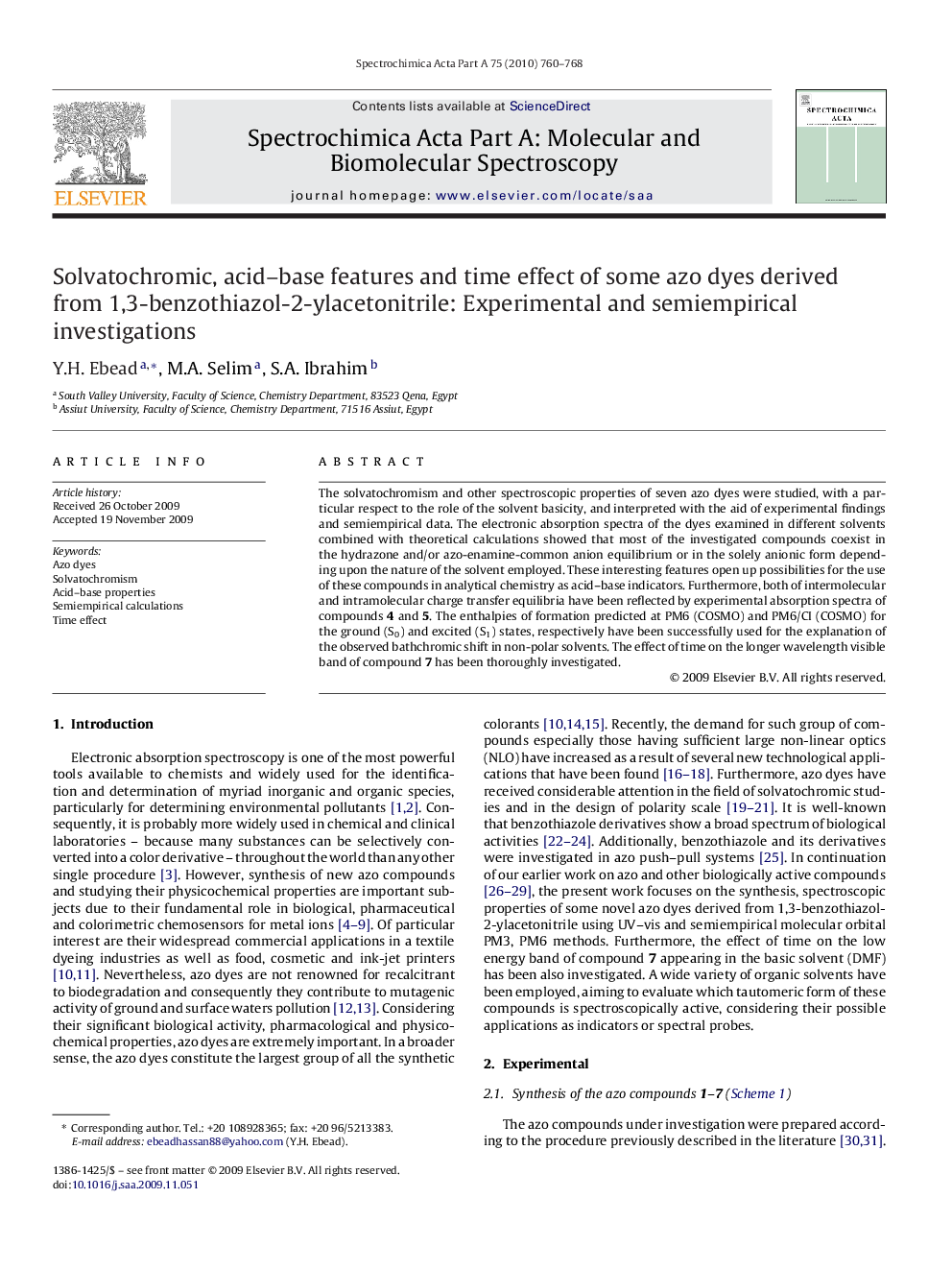| Article ID | Journal | Published Year | Pages | File Type |
|---|---|---|---|---|
| 1237214 | Spectrochimica Acta Part A: Molecular and Biomolecular Spectroscopy | 2010 | 9 Pages |
The solvatochromism and other spectroscopic properties of seven azo dyes were studied, with a particular respect to the role of the solvent basicity, and interpreted with the aid of experimental findings and semiempirical data. The electronic absorption spectra of the dyes examined in different solvents combined with theoretical calculations showed that most of the investigated compounds coexist in the hydrazone and/or azo-enamine-common anion equilibrium or in the solely anionic form depending upon the nature of the solvent employed. These interesting features open up possibilities for the use of these compounds in analytical chemistry as acid–base indicators. Furthermore, both of intermolecular and intramolecular charge transfer equilibria have been reflected by experimental absorption spectra of compounds 4 and 5. The enthalpies of formation predicted at PM6 (COSMO) and PM6/CI (COSMO) for the ground (S0) and excited (S1) states, respectively have been successfully used for the explanation of the observed bathchromic shift in non-polar solvents. The effect of time on the longer wavelength visible band of compound 7 has been thoroughly investigated.
